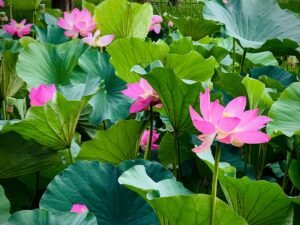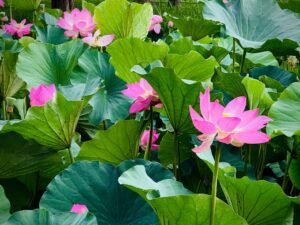

How to Tell a Simple Story About Your Weekend in Japanese
Storytelling is an age-old tradition that transcends cultures, and in Japan, it holds a special place in the hearts of many. Simple storytelling in Japanese not only serves as a means of entertainment but also as a powerful tool for language learning. By weaving narratives, learners can engage with the language in a more meaningful way, allowing them to grasp vocabulary, grammar, and cultural nuances.
The beauty of storytelling lies in its ability to connect people through shared experiences, and for those learning Japanese, it offers a unique opportunity to immerse oneself in the language while exploring the rich tapestry of Japanese culture. In this article, we will delve into the essential components of simple storytelling in Japanese, focusing on how to effectively narrate weekend activities. By breaking down the process into manageable sections, learners can build their confidence and skills in both speaking and writing.
From basic vocabulary to structuring a story, we will explore various techniques that will enhance your storytelling abilities. Whether you are a beginner or looking to refine your skills, this guide will provide you with the tools necessary to share your experiences in Japanese with clarity and creativity. Learn Japanese at the Norwegian Language School.
Table of Contents
ToggleSummary
- Simple storytelling in Japanese involves structuring your story with a beginning, middle, and end.
- Basic vocabulary and phrases for weekend activities are essential for crafting a compelling story.
- Using past tense verbs is crucial for describing your weekend activities in Japanese.
- Adding details and descriptions helps bring your story to life and make it more engaging.
- Connecting sentences and ideas with conjunctions and particles improves the flow of your storytelling in Japanese.
Basic Vocabulary and Phrases for Weekend Activities
To begin crafting your story, it is crucial to familiarise yourself with basic vocabulary and phrases related to weekend activities. Common verbs such as “行く” (iku – to go), “見る” (miru – to see), and “食べる” (taberu – to eat) are fundamental building blocks for any narrative. Additionally, incorporating nouns that represent popular weekend activities can enrich your storytelling.
For instance, words like “映画” (eiga – movie), “公園” (kouen – park), and “友達” (tomodachi – friend) can help paint a vivid picture of your weekend adventures. Moreover, phrases that express common activities can be particularly useful. For example, “友達と映画を見に行きました” (Tomodachi to eiga o mi ni ikimashita – I went to see a movie with my friend) provides a clear context for your story.
By mastering these basic vocabulary words and phrases, you will be well-equipped to narrate your weekend experiences in a way that is both engaging and easy to understand.
Structuring Your Story: Beginning, Middle, and End

A well-structured story is essential for effective communication, and this holds true for storytelling in Japanese as well. The classic narrative arc consists of three main components: the beginning, middle, and end. In the beginning, you should introduce the setting and characters involved in your story.
This could include where you went, who you were with, and what prompted the activities you engaged in over the weekend. The middle section is where the action unfolds. Here, you can describe the events that took place during your weekend, detailing the activities you participated in and any interesting occurrences that happened along the way.
Finally, the end of your story should provide a conclusion or reflection on your experiences. This could involve sharing what you learned or how you felt about the weekend overall. By adhering to this structure, you can create a coherent narrative that captivates your audience and makes it easier for them to follow along.
Using Past Tense Verbs to Describe Your Weekend Activities
When recounting past experiences, using the correct verb tense is crucial for clarity. In Japanese, past tense verbs are typically formed by modifying the verb stem. For instance, the verb “行く” (iku – to go) becomes “行った” (itta) in the past tense.
Mastering these transformations allows you to accurately describe what you did over the weekend. For example, instead of saying “I go to the park” (公園に行きます – kouen ni ikimasu), you would say “I went to the park” (公園に行きました – kouen ni ikimashita). This shift not only conveys the timing of your actions but also adds depth to your storytelling by grounding it in past experiences.
By practising these verb forms, you will enhance your ability to narrate your weekend activities with precision and fluency.
Adding Details and Descriptions to Bring Your Story to Life
To truly engage your audience, it is essential to add details and descriptions that bring your story to life. This involves using adjectives and adverbs that enhance your narrative and create vivid imagery. For instance, instead of simply stating “I went to a restaurant,” you might say “I went to a lovely Italian restaurant” (素敵なイタリアンレストランに行きました – sutekina itarian resutoran ni ikimashita).
Such descriptions not only make your story more interesting but also help listeners visualise your experiences. Additionally, incorporating sensory details can further enrich your storytelling. Describe what you saw, heard, tasted, or felt during your weekend activities.
For example, “The park was filled with beautiful cherry blossoms” (公園は美しい桜でいっぱいでした – kouen wa utsukushii sakura de ippai deshita) evokes a strong visual image that draws listeners into your narrative. By focusing on these details, you can create a more immersive experience for your audience and make your storytelling more impactful.
Connecting Sentences and Ideas with Conjunctions and Particles

To create a fluid narrative, it is important to connect sentences and ideas effectively using conjunctions and particles. In Japanese, there are various conjunctions such as “そして” (soshite – and), “しかし” (shikashi – but), and “だから” (dakara – therefore) that can help link different parts of your story together. These words serve as bridges between ideas, allowing for a smoother flow of information.
Particles also play a significant role in connecting thoughts within sentences. For instance, using “と” (to) can indicate companionship or association, while “から” (kara) can denote causation or reason. By mastering these linguistic tools, you can create more complex sentences that convey relationships between different events or ideas in your story.
This not only enhances clarity but also adds depth to your narrative structure.
Incorporating Time Markers to Sequence Your Weekend Events
Incorporating time markers is essential for sequencing events in your storytelling. Words such as “まず” (mazu – first), “次に” (tsugi ni – next), and “最後に” (saigo ni – finally) help guide listeners through the timeline of your weekend activities. By using these markers strategically, you can create a clear chronological order that makes it easier for your audience to follow along.
For example, you might say: “まず、友達と公園に行きました。次に、レストランで昼ごはんを食べました。最後に、映画を見ました。” (Mazu, tomodachi to kouen ni ikimashita. Tsugi ni, resutoran de hirugohan o tabemashita. Saigo ni, eiga o mimashita – First, I went to the park with my friend.
Next, we had lunch at a restaurant. Finally, we watched a movie.) This structured approach not only clarifies the sequence of events but also helps maintain the listener’s interest throughout your story.
Expressing Emotions and Reactions to Your Weekend Experiences
A compelling story often includes emotional elements that resonate with the audience. Expressing emotions and reactions related to your weekend experiences can add depth and relatability to your narrative. In Japanese, there are various ways to convey feelings using adjectives or phrases such as “楽しかった” (tanoshikatta – it was fun), “嬉しかった” (ureshikatta – I was happy), or “驚きました” (odorokimashita – I was surprised).
For instance, after describing an exciting event during your weekend, you might say: “その映画は本当に面白かったです。私はとても楽しみました。” (Sono eiga wa hontou ni omoshirokatta desu. Watashi wa totemo tanoshimimashita – That movie was really interesting. I enjoyed it very much.) By sharing your emotional responses, you create a connection with your audience that makes your story more engaging and memorable.
Practicing Pronunciation and Intonation for Fluent Storytelling
Effective storytelling is not solely about content; pronunciation and intonation play a vital role in how your narrative is received. Practising pronunciation ensures that your words are clear and understandable while intonation adds emotion and emphasis to your storytelling. In Japanese, pitch accent can change the meaning of words; therefore, paying attention to how you pronounce certain phrases is crucial.
To improve your pronunciation and intonation, consider listening to native speakers or engaging in language exchange sessions where you can practice speaking aloud. Recording yourself while telling stories can also be beneficial; it allows you to hear how you sound and identify areas for improvement. By dedicating time to practice these aspects of language learning, you will enhance your storytelling skills significantly.
Using Visual Aids and Gestures to Enhance Your Storytelling
Visual aids and gestures can greatly enhance storytelling by providing context and engaging the audience’s senses. When narrating your weekend activities in Japanese, consider using images or props that relate to your story. For example, if you visited a particular restaurant or event, showing pictures can help illustrate your experience more vividly.
Gestures also play an important role in conveying emotions and actions during storytelling. Using hand movements or facial expressions can help emphasise key points in your narrative and make it more dynamic. By combining verbal storytelling with visual elements and gestures, you create a multi-sensory experience that captivates listeners and makes your story more memorable.
Tips for Receiving Feedback and Improving Your Storytelling Skills
Receiving feedback is an invaluable part of improving any skill, including storytelling in Japanese. Seek out opportunities for constructive criticism from teachers or peers who are proficient in the language. Engaging in language exchange groups or attending storytelling workshops can provide a supportive environment where you can share your stories and receive valuable insights.
When receiving feedback, approach it with an open mind and a willingness to learn. Take note of specific areas where you excelled as well as aspects that may need improvement. Practising regularly based on this feedback will help solidify your skills over time.
Remember that storytelling is an art form that evolves with practice; by continually refining your techniques and embracing feedback, you will become a more confident storyteller in Japanese. As we conclude this exploration of simple storytelling in Japanese, it’s worth noting that mastering these skills can be greatly enhanced through structured courses offered at institutions like the NLS Norwegian Language School. Their Japanese courses provide comprehensive training tailored for learners at various levels, ensuring that students not only grasp the language but also develop their storytelling abilities effectively.
With expert guidance and immersive learning experiences available at NLS, aspiring storytellers can cultivate their skills while enjoying the rich cultural heritage of Japan through its language. Whether you’re just starting out or looking to refine your existing skills, NLS offers an excellent platform for achieving fluency in Japanese storytelling.
Ready to speak Japanese? Enroll for Japanese classes at the NLS Norwegian Language School!
If you want to learn Norwegian, you can register for classes here. We look forward to hearing from you and helping you become fluent in Norwegian.





